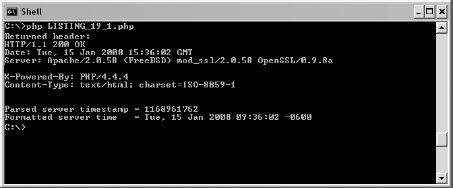Of all procurement bots, snipers are the best known, largely because of their popularity on eBay. Snipers are procurement bots that use time as their trigger event. Snipers wait until the closing seconds of an online auction and bid just before the auction ends. The intent is to make the auction's last bid and avoid price escalation caused by bidding wars. While making the last bid is what characterizes snipers, a more important feature is that they enable people to participate in online auctions without having to dedicate their time to monitoring individual items or making bids at the most opportune moments.
While eBay is the most popular target, sniping programs can purchase products from any auction website, including Yahoo!, Overstock.com, uBid, or even official US government auction sites.
The sniping process is similar to that of the procurement bots described earlier. The main differences are that the clocks on the auction website and sniper must be synchronized, and the purchase trigger is determined by the auction's end time. Figure 19-2 shows a common sniper construction.
The purchase criteria for an auction are generally the auction identification number and the maximum price the user is willing to pay for the item. Advanced snipers, however, may periodically look for and target any auction that matches other predefined purchase criteria like the brand or age of an item.
Authentication of snipers is similar to other authentication practices discussed earlier. Occasionally, snipers can authenticate users without the need for a username and password, but these techniques vary depending on the auction site and the special programming interfaces it provides. The problem of disclosing login credentials to third-party sniping services is one of the reasons people often choose to write their own snipers.
Many auctions end prematurely due to early cancellation by the seller or to buy-it-now purchases, which allow a bidder to buy an item for a fixed price before the auction comes to its scheduled end. For both of these reasons, snipers must periodically verify that the auction it intends to snipe is still a valid auction. Not doing so may cause a sniper to mistakenly bid on nonexistent auctions. Typically, snipers validate the auction once after collecting the purchase criteria and again just before bidding.
Since a sniper uses the closing time of an auction as its event trigger, the sniper and auction website must synchronize their clocks. Synchronization involves requesting the timestamp from the online auction's server and subtracting that value from the auction's scheduled end. The result is the starting value for a countdown clock. When the countdown clock approaches zero, the sniper places its bid.
A countdown clock is a more accurate method of establishing a bid time than relying on your computer's internal clock to make a bid a few seconds before the scheduled end of an auction. This is particularly true if your sniper is running on a PC, where internal clocks are notoriously inaccurate.
To guarantee synchronization of the sniper and the online auction's clock, the sniper should synchronize periodically and with increased frequency as the end of the auction nears. Periodic synchronization reduces the sniper's reliance on the accuracy of your computer's clock. Chances are, neither the clock on the auction site's server nor the one on your PC is set to the correct time, but from a sniper's perspective, the server's clock is the only one that matters.
Obtaining a server's clock value is as easy as making a header request and parsing the server's timestamp from the header, as shown in Listing 19-1.
// Include libraries
include("LIB_http.php");
include("LIB_parse.php");
// Identify the server you want to get local time from
$target = "http://www.schrenk.com";
// Request the httpd head
$header_array = http_header($target, $ref="");
// Parse the local server time from the header
$local_server_time = return_between($header_array['FILE'], $start="Date:",
$stop="
", EXCL);
// Convert the local server time to a timestamp
$local_server_time_ts = strtotime($local_server_time);
// Display results
echo "
Returned header:
";
echo $header_array['FILE']."
";
echo "Parsed server timestamp = ".$local_server_time_ts ."
";
echo "Formatted server time = ".date("r", $local_server_time_ts)."
";
Listing 19-1: A script that fetches and parses a server's time settings
When the script in Listing 19-1 is run, it displays a screen similar to the one in Figure 19-3. Here you can see that the script requests an HTTP header from a target server. It then parses the timestamp (which is identified by the line starting with Date:) from the header.
It is fairly safe to assume that the target webserver's clock is the same clock that is used to time the auctions. However, as a precaution, it is worthwhile to verify that the timestamp returned from the webserver correlates to the time displayed on the auction web pages.
Once the sniper parses the server's formatted timestamp, it converts it into a Unix timestamp, an integer that represents the number of seconds that have elapsed since January 1, 1970. The use of the Unix timestamp is important because in order to perform the countdown, the sniper needs to know how many seconds separate the current time from the scheduled end of the auction. If you have Unix timestamps for both events, it's simply a matter of subtracting the current server timestamp value from the end of auction timestamp. Failure to convert to Unix timestamps results in some difficult calendar math. For example, without Unix timestamps, you may need to subtract 10:20 PM, September 19 from 8:12 AM, September 20 to obtain the time remaining in an auction.
A sniper needs to make one bid, close to the auction's scheduled end but just before other bidders have time to respond to it. Therefore, you will want to make your bid a few seconds before the auction ends, but not so close to the end that the auction is over before the server has time to process your bid.
Your sniper will submit bids in a manner similar to the other procurement bots, but since your bid is time sensitive, your sniper will need to anticipate how long it will take to complete the forms and get responses from the target server. You should expect to fine-tune this process on live auctions.
Evaluating the results of a sniping attempt is also similar to evaluating the purchase results of other procurement bots. The only difference is that, unlike other procurement bots, there is a possibility that you were outbid or that the sniper bid too late to win the item. For these reasons, you may want to include additional diagnostic information in the results, including the final price, and whether you were outbid or the auction ended before your bid was completed. This way, you can learn what may have gone wrong and correct problems that may reappear in future sniping attempts.


